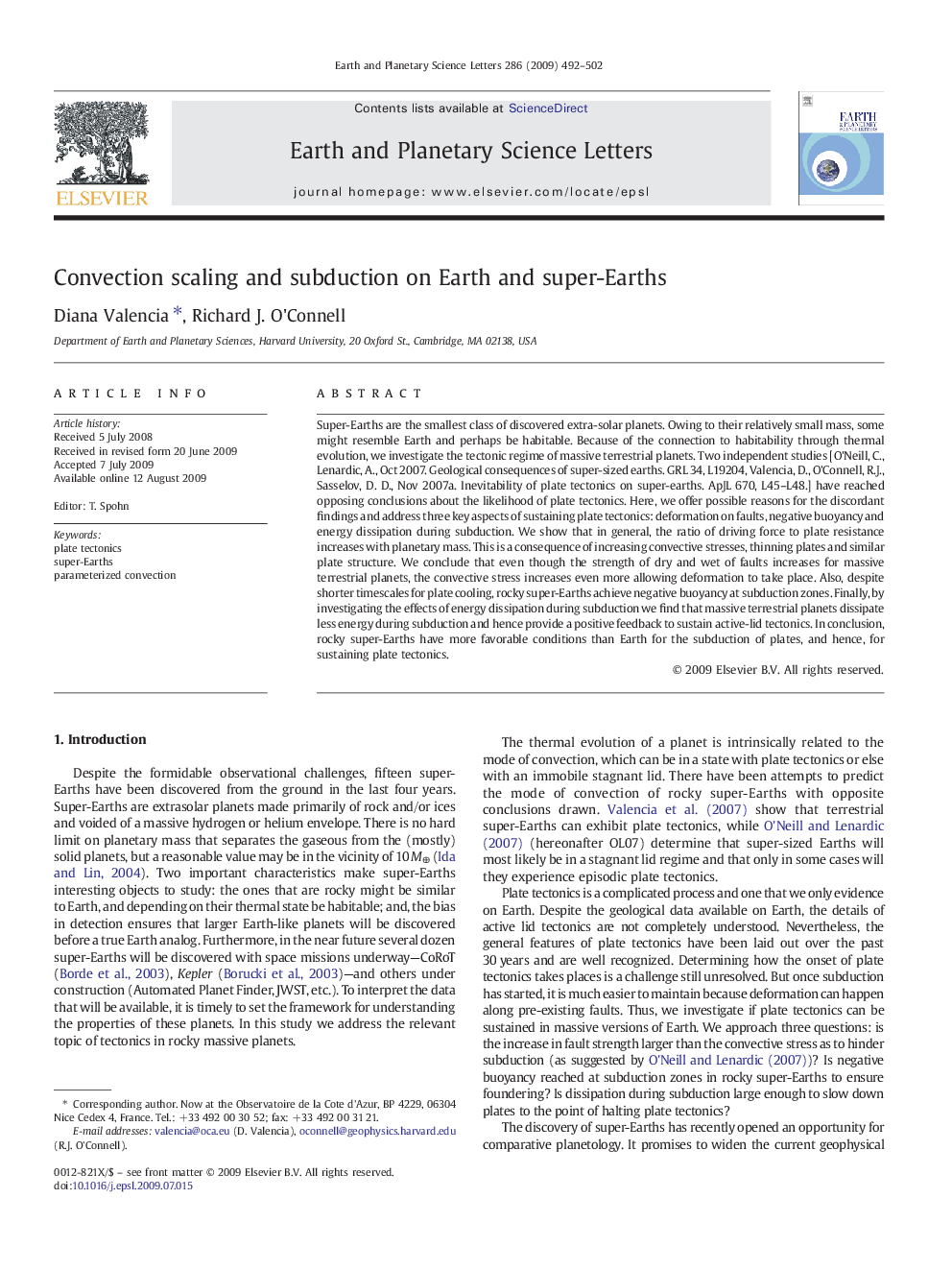| Article ID | Journal | Published Year | Pages | File Type |
|---|---|---|---|---|
| 4679127 | Earth and Planetary Science Letters | 2009 | 11 Pages |
Super-Earths are the smallest class of discovered extra-solar planets. Owing to their relatively small mass, some might resemble Earth and perhaps be habitable. Because of the connection to habitability through thermal evolution, we investigate the tectonic regime of massive terrestrial planets. Two independent studies [O'Neill, C., Lenardic, A., Oct 2007. Geological consequences of super-sized earths. GRL 34, L19204, Valencia, D., O'Connell, R.J., Sasselov, D. D., Nov 2007a. Inevitability of plate tectonics on super-earths. ApJL 670, L45–L48.] have reached opposing conclusions about the likelihood of plate tectonics. Here, we offer possible reasons for the discordant findings and address three key aspects of sustaining plate tectonics: deformation on faults, negative buoyancy and energy dissipation during subduction. We show that in general, the ratio of driving force to plate resistance increases with planetary mass. This is a consequence of increasing convective stresses, thinning plates and similar plate structure. We conclude that even though the strength of dry and wet of faults increases for massive terrestrial planets, the convective stress increases even more allowing deformation to take place. Also, despite shorter timescales for plate cooling, rocky super-Earths achieve negative buoyancy at subduction zones. Finally, by investigating the effects of energy dissipation during subduction we find that massive terrestrial planets dissipate less energy during subduction and hence provide a positive feedback to sustain active-lid tectonics. In conclusion, rocky super-Earths have more favorable conditions than Earth for the subduction of plates, and hence, for sustaining plate tectonics.
